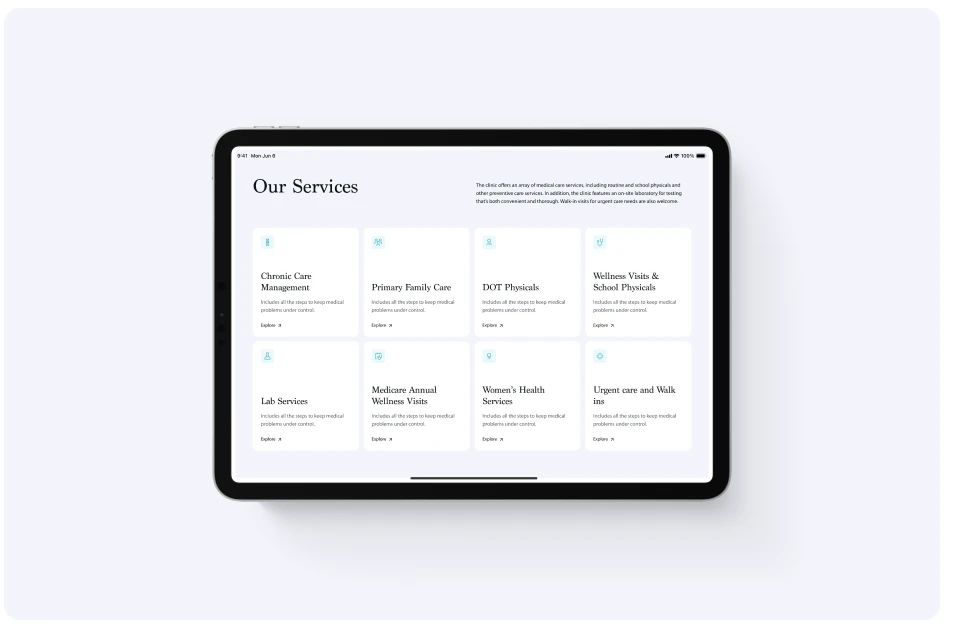Access Medical Clinic – Website Redesign for US-Based Healthcare Network

Date
2024
Industry
Healthcare
Medical Services
Clinic Network
Client
Access Medical Clinic
Services
UI / UX
Web Design
Webflow
Access Medical Clinic features a wide network of clinics in the US, offering family practice, pediatrics, urgent care, and other services. Existing website was dated and inconvenient to manage, so that's where Celerart, a medical website design company, comes in. We have redesigned the website, using new clean layouts and architecture that empowers users to conveniently navigate the site and find clinics easily. Built with Webflow, the site is blazing fast; seamless integration with third-party tools allows for quick management of clinics and populating the website with content without technical knowledge. Brand identity already existed, but we took it to the next level, creating a consistent look & feel.

























































